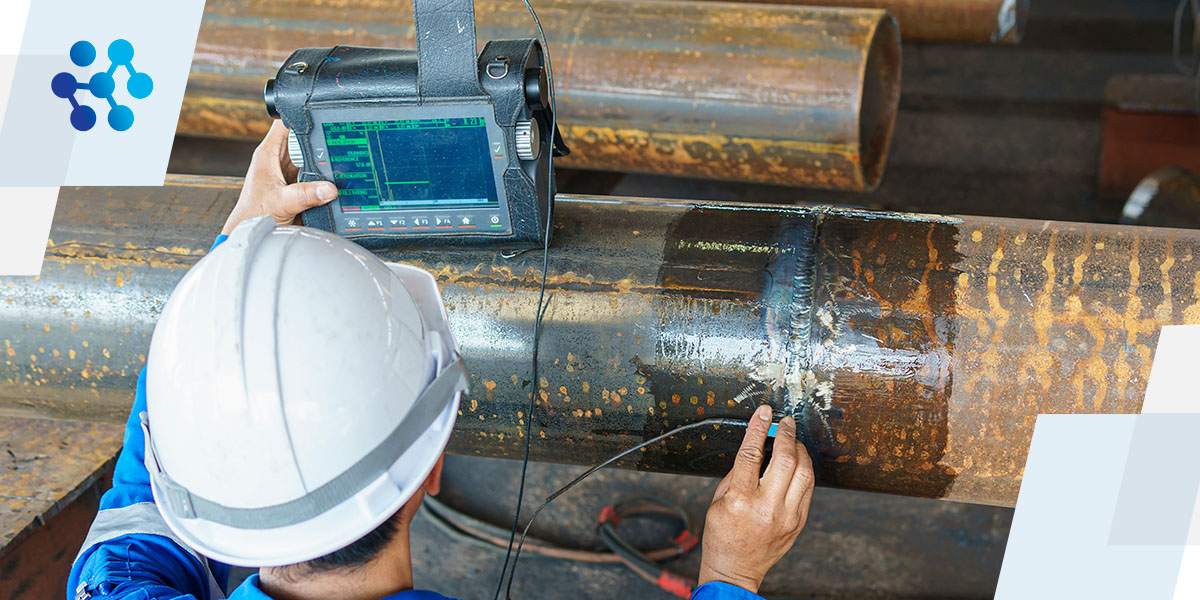Tank Welding Inspection: Ensuring Long-Term Sturdiness and Safety
Tank Welding Inspection: Ensuring Long-Term Sturdiness and Safety
Blog Article

Recognizing the Relevance of Rigorous Container Welding Evaluation Processes in Preventing Failures and Enhancing Lifespan
In the world of industrial procedures, the significance of extensive tank welding evaluation procedures can not be overstated. By carrying out various examination approaches, companies can identify defects early, consequently staying clear of pricey repercussions and extending the life of their storage space containers.
Relevance of Welding Examinations
Acknowledging the vital duty of welding inspections in maintaining structural stability, these procedures make certain that welds satisfy well-known standards and requirements - Tank Welding Inspection. Effective welding examinations are vital in the building and upkeep of containers, as they directly influence the durability and safety of the frameworks. By recognizing prospective deficiencies, such as incorrect strategies or product flaws, inspections reduce the threat of tragic failures
Welding inspections include numerous techniques, consisting of visual assessments, non-destructive screening (NDT), and evaluations of welding treatments. Each method serves to confirm the top quality and conformity of welds with sector policies, consequently securing both workers and environmental passions. In addition, normal assessments foster a culture of liability and quality within the workforce, ensuring that all staff member follow finest techniques.
In addition, these evaluations add to the overall lifecycle monitoring of storage tanks by identifying wear or destruction early at the same time. By addressing these problems proactively, organizations can expand the functional lifespan of their possessions, eventually causing cost savings and boosted dependability. In recap, the significance of welding assessments can not be overstated; they are necessary for guaranteeing safety, long life, and compliance in container building and construction and upkeep.
Typical Sources Of Storage Tank Failures
Understanding the typical sources of container failures is important for preventing disastrous occurrences and making sure the durability of storage systems. One common cause of container failing is corrosion, which can significantly weaken the architectural stability of storage tanks in time. Ecological elements, such as exposure to moisture, chemicals, and temperature level fluctuations, can accelerate this procedure.
Another essential aspect is incorrect welding strategies, which may bring about problems like fractures or insufficient joints. These issues can compromise the tank's strength and bring about leaks or ruptures. Additionally, inadequate upkeep techniques can lead to undiscovered damage, inevitably boosting the threat of failing.
Layout imperfections, including insufficient thickness or inadequate product option, can likewise add to container susceptabilities. Operational aspects, such as overfilling or direct exposure to extreme pressures, can strain the container beyond its intended restrictions.
Secret Examination Techniques
Reliable examination strategies play a crucial function in alleviating the risks linked with storage tank failures. A comprehensive technique to storage tank welding assessment involves several key methods, each created to determine prospective flaws and make sure architectural stability.
Aesthetic evaluation remains the initial line of defense, permitting inspectors to determine surface abnormalities such as fractures, corrosion, or misalignment. This strategy is often supplemented by non-destructive testing (NDT) methods, which are important for examining weld high quality without endangering the storage tank's honesty.

Moreover, magnetic particle testing (MPT) and dye penetrant testing (DPT) work for detecting surface flaws in ferromagnetic materials and non-porous surfaces, respectively. Each technique has its toughness and restrictions; therefore, a mix of methods is frequently employed to accomplish detailed examination results.
Benefits of Strenuous Evaluations
While the instant costs of extensive inspections may seem challenging, the lasting advantages substantially outweigh these preliminary financial investments. Executing complete examination processes not just boosts the integrity and safety and security Homepage of container frameworks yet also lessens the threat of catastrophic failings that can result in significant financial losses and environmental damage.
Rigorous assessments help determine prospective problems early in the welding procedure, permitting prompt restorative actions that avoid costly repairs or replacements down the line. This proactive method fosters a society of quality control, where adherence to finest practices becomes ingrained in functional treatments. Furthermore, regular assessments add to boosted possession durability, as they make certain that click this link containers continue to be in optimum condition throughout their lifespan.
In addition, the documentation created from these assessments offers as a valuable resource for upkeep planning and efficiency evaluations. This data-driven technique can additionally improve functional performance, resulting in reduced downtime and boosted efficiency. Ultimately, extensive inspections not only safeguard the structural integrity of tanks however likewise provide considerable financial benefits, strengthening the notion that purchasing high quality guarantee is a wise decision for any kind of organization entailed in storage tank procedures.
Regulatory Criteria and Conformity
Regulatory requirements and conformity are vital parts of storage tank welding assessment processes, as they establish the structure for ensuring safety and top quality in operations. Conformity with these criteria not only alleviates dangers yet also improves the total integrity of welded structures. Different organizations, including the American Society of Mechanical Designers (ASME) and the American Oil Institute (API), supply guidelines that dictate appropriate techniques for welding, assessment, and testing.
These requirements mandate the usage of qualified employees, the execution of rigorous assessment methods, and adherence to particular welding procedures. By lining up with regulative needs, companies can visit the site ensure that their storage tanks satisfy the required security and efficiency requirements, consequently decreasing the possibility of disastrous failures that can result in considerable financial losses and ecological damage.

Furthermore, governing conformity promotes a society of responsibility and constant improvement within the welding and manufacture industries (Tank Welding Inspection). Routine audits and evaluations make certain that techniques continue to be straightened with developing criteria, thus advertising lasting reliability and functional performance. Inevitably, adherence to regulative requirements not just shields properties but also enhances the life expectancy of bonded containers, ensuring they offer their desired objective efficiently with time
Verdict
In final thought, rigorous container welding evaluation procedures play a crucial function in preventing failures and expanding the life-span of storage space structures. By recognizing potential deficiencies with various evaluation strategies, organizations can minimize threats linked with tank stability.
Report this page